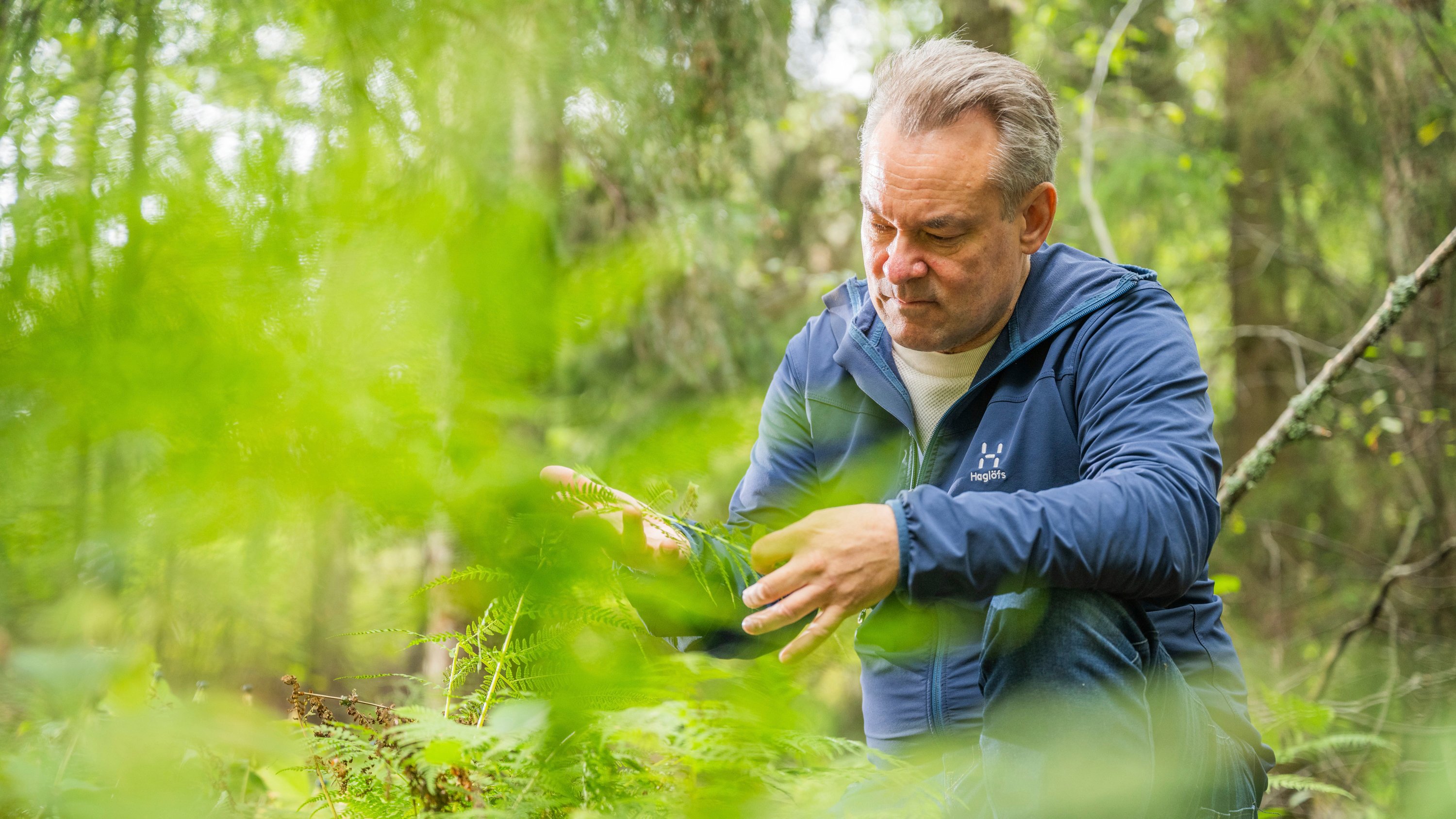Metsä Board’s products are manufactured from pure, fresh wood fibre from sustainably managed northern forests. In future, these forests will be managed even better. Metsä Group, which also encompasses Metsä Board, adopted its regenerative forestry principles in the spring of 2023. The goal is to ensure forests are transferred from one generation to the next in a vibrant, diverse and climate-resilient condition. According to Timo Lehesvirta this involves a systemic change, which will enable the economy and biodiversity to grow and strengthen simultaneously.
“Historically, economic systems have created wellbeing at nature’s expense. In many forms of land use, production is still based on first erasing the original ecosystem. Regenerative forestry is about production processes that verifiably do not harm the environment.” According to Lehesvirta, this is the first time any operator has carried out a large-scale change like this to the economic system.
I believe the regenerative forestry strategy and a production process that offers reliable verification of the overall impact of operations is also of interest to Metsä Board’s customers.
Strengthening biodiversity
The goal of regenerative forestry is to strengthen forest biodiversity while using forests. “Finnish forest management is of high quality as it is. We’re not reinventing the wheel but aiming to mainstream the best nature-boosting practices in forestry.”
The key practices include diversifying the tree species and structure of forests, as well as increasing the amount of decaying trunk wood. “Simply by diversifying tree species and adding more decaying trunk wood, we can improve the living conditions of around 10,000 species living in commercial forests.” In addition, tailored action plans will be drawn up for the most endangered forest areas such as herb-rich forests and sunlit ridge slopes.
Based on native tree species
In regenerative forestry, production processes are based on tree species that are naturally found in the area, with no human intervention. There are approximately 30 native tree species in Finland, of which Metsä processes only five industrially. "At Metsä, we leave the other tree species during felling to grow and boost biodiversity in the forest."
 Around a quarter of the species living in Finnish forests depend on decaying wood. In regenerative forestry, decaying trunk wood is added to commercial forests using retention trees and high biodiversity stumps. As their name suggests, retention trees are retained in the forest during felling and left there to grow, die and decay. High biodiversity stumps are trees cut off at a height of 2–5 metres. They are an efficient way to create standing decaying wood in forests that would otherwise contain little of it.
Around a quarter of the species living in Finnish forests depend on decaying wood. In regenerative forestry, decaying trunk wood is added to commercial forests using retention trees and high biodiversity stumps. As their name suggests, retention trees are retained in the forest during felling and left there to grow, die and decay. High biodiversity stumps are trees cut off at a height of 2–5 metres. They are an efficient way to create standing decaying wood in forests that would otherwise contain little of it.
Retention trees and protective thickets, meaning dense stands of trees and bushes, also diversify the structure of forests. A varied structure increases biodiversity, as different species need different types of forests as habitats.
Strengthening the entire forest ecosystem
Growing forests serve as carbon sinks, which means that as they grow, they store carbon dioxide from the atmosphere, mitigating global warming. Grown forests and products made from wood serve as carbon storages. However, Lehesvirta points out that carbon is not the only environmental question related to forest use: the role of forests needs to be seen more comprehensively.
There’s a lot of public talk about carbon sinks, which, of course, play an important role in mitigating climate change. However, forests also provide other ecosystem services, both material and immaterial.
In regenerative forestry, the goal is to simultaneously optimise all the forest ecosystem services, which include things like timber, berries, mushrooms, pollinators and health impacts in addition to carbon sinks. "Through overall optimisation, we ensure the forest ecosystem remains as diverse as possible so that its entire added value potential is available for future generations."
Informing consumers
Verifying positive change is a key element of regenerative forestry principles. Metsä Group jointly monitors the development of the state of forest nature with research institutions in the field. “Various ideologies and approaches are prominent in public forest discussion, so we want to ensure that the impacts of wood use are measured using scientific methods.”
The goal is that it will be possible to verifiably measure the strengthening of forest biodiversity by 2030 at the latest. “Working with our stakeholders, we aim to develop verified measurements that demonstrate the environmental impacts across the product’s value chain from forests to consumers.”
This article is featured in Board Magazine 2023 Winter issue. Check out the magazine for more interesting stories like this.

